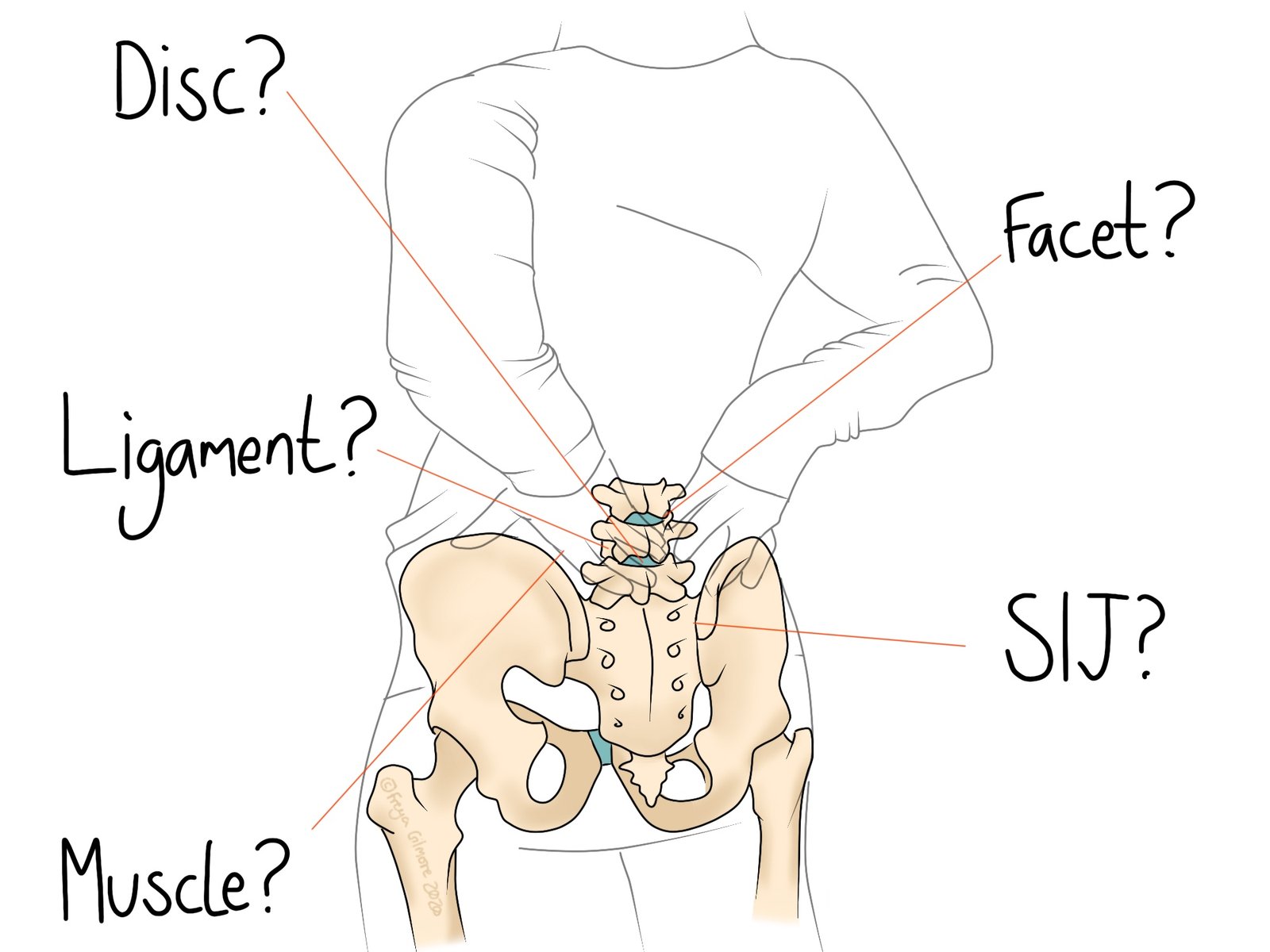Stoma- means body and gnath- means jaw, so the stomatognathic system is simply the relationship…

Lower Back Pain
Back pain is one of the main things we see in clinic. There are a number of causes that osteopaths can help to manage.

Causes of Lower Back Pain
Often there’s more than one thing causing symptoms during any given episode.
The NHS does not routinely X-Ray or MRI simple back pain or sciatica. This makes sense- a lot of these causes won’t even show up on imaging, so it’s best reserved for identifying more serious causes such as fractures. Your osteopath can work out the cause or causes of your pain based on your history, symptoms, and the way your body is behaving. The aim is to resolve your symptoms and reduce the recurrence of them.
Lumbar Disc Problems
Between each vertebra there is a disc: soft on the inside and fibrous on the outside. The fibrous outer edge can be injured or weakened causing local inflammation and potential pain. When the outside is weakened, the soft inside can push against it and cause a bulge. If this bulge pushes on a nerve, you can develop sciatica, with or without local pain. It is important to note that discs never actually slip, they are very firmly anchored to the bones above and below them. Even in traumatic cases where spinal bones are fractured and displaced, the discs stay firmly connected.
There is a lot of fear surrounding disc problems, which is exactly what you don’t need! A big factor in chronic pain is the way we think about the pain. If we meet it with fear and the worry that this will be disabling, we put the body on high alert and make it harder to get past the pain.
Some reassuring points about disc problems:
- disc bulges can reabsorb on their own.
- discs can bulge without producing symptoms. 30% of 20-somethings with no back pain may have a disc bulge.
- incidence of disc bulges reduce after the age of 55.
Muscle Strain
Just like you can sometimes wake up with a “cricked neck”, it can be surprisingly easy to strain a back muscle. Sleeping in an odd position or a simple quick movement can be enough to cause a very mild strain in one of the many back muscles. This kind of strain may well resolve on its own, but if it does need a nudge in the right direction, we can help.
For back pain that isn’t caused by a strain itself, the muscles will still most likely be involved. The easiest way for the body to try and protect itself is to limit movement by tightening up the muscles around the sore area. Sometimes management can be as simple as relaxing off the muscles,
Joints
There are plenty of joints in the spine itself and in the pelvis, all of which can cause aches and pains when irritated. Often this is a transient pain as one of the spinal joints gets a bit stiff, but sometimes this can be a recurrent or longer term issue.
Osteoarthritis in the lumbar spine is not uncommon, but it’s not something you just have to live with. The best thing you can do for arthritis is to get the joints moving again. As mentioned before, fear and protective muscles are the body’s more unhelpful efforts to protect itself. Your osteopath can work with you in treatment sessions and in their advice and exercises to calm everything down in order to get that movement back.
Osteopathy and Lower Back Pain
Osteopaths have a lot of experience with lower back pain! We are trained to identify the difference between this kind of back pain and more serious causes. If we do suspect something more serious, we can direct you to the right practitioner. You can expect your osteopath to listen to your symptoms and consider your body as a whole. During treatment, we may work well away from the painful area to address any underlying causes. We also look for any changes your body has made to adapt to the discomfort.
A big part of managing back problems is getting to the brain. As mentioned before, teaching the brain that movement is safe, and that this is temporary is hugely important. This is why we are so interested in your story. If we can understand every element in your pain, we can help you to the best of our ability.
Click here to book an appointment and get your lower back pain under control



